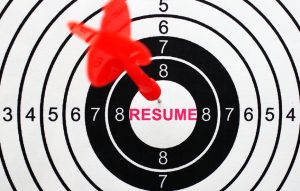Join our online community and be inspired to achieve your goals!
VIEW OUR FACEBOOK PAGE121 words to get your resume noticed

You need to stand out if you want to secure your next role, and using the same old words to describe what you do and the value you add is not the way to achieve that. When you’re writing your resume, ensure that the content is short, sharp and compelling. It should clearly sell you and your unique skill set as a viable candidate for the roles you are applying for.
We often liken resumes to sales proposals on YOU! It’s essential to highlight key skills, qualifications and experience in a way that demonstrates value to a potential employer. It should be packed full of easy-to-read facts and achievements. So get clear on exactly what you want and then work out what you’ve achieved previously that demonstrates the value you will add to a future employer.
Then, when writing your content, instead of using standard words to describe what you did, use some of these action-oriented and positive words that will help you stand out from the crowd.
Words to use when you saved the company money or time:
- Accelerated
- Boosted
- Centralised
- Consolidated
- Converted
- Customised
- Decreased
- Expanded
- Integrated
- Merged
- Overhauled
- Reconciled
- Reduced
- Rehabilitated
- Reorganised
- Replaced
- Restructured
- Simplified
- Standardised
- Streamlined
- Yielded
Words to use when you improved something:
- Altered
- Changed
- Clarified
- Diagnosed
- Enhanced
- Enriched
- Invigorated
- Perfected
- Progressed
- Redesigned
- Refined
- Revamped
- Revitalised
- Transformed
Words to describe experience with projects:
- Created
- Designed
- Developed
- Devised
- Drove
- Established
- Founded
- Improved
- Initiated
- Introduced
- Invented
- Launched
- Pioneered
- Spearheaded
Words to describe experience with teams:
- Aligned
- Coached
- Conducted
- Demonstrated
- Informed
- Instructed
- Led
- Mentored
- Strengthened
- Trained
- Transformed
Words to use if you work with partners and/or customers:
- Advised
- Advocated
- Arbitrated
- Coached
- Consulted
- Educated
- Facilitated
- Informed
- Supported
Words to describe experience with data and/or information:
- Analysed
- Assessed
- Audited
- Calculated
- Categorised
- Classified
- Compiled
- Composed
- Critiqued
- Drafted
- Identified
- Integrated
- Interpreted
- Investigated
- Leveraged
- Monitored
- Qualified
- Quantified
- Recorded
- Researched
- Revised
Words to describe general work characteristics:
- Accurate
- Active
- Adaptable
- Articulate
- Capable
- Committed
- Competent
Words to describe general work duties or responsibilities:
- Altered
- Arranged
- Developed
- Directed
- Evaluated
- Formulated
- Ordered
- Planned
- Prepared
Words to use instead of achieved:
- Accomplished
- Attained
- Awarded
- Carried out
- Completed
- Conquered
- Demonstrated
- Exceeded
- Outdid
- Outperformed
- Realised
- Succeeded
- Surpassed
- Targeted
- Topped
Next time you update your resume, try swapping out some of the more common words with some stronger, more compelling language to help you stand out to recruiters. Use our list to get started, and review your documents for repetition – use a thesaurus to identify other alternatives.
Are you interested in getting assistance from a professional resume writer to prepare a winning resume that will help you stand out in your next job application? If so, please see our Resume Writing Services.









